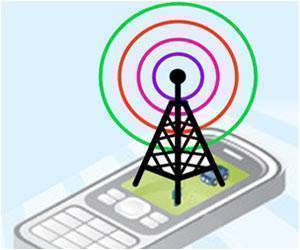A report from an expert committee finds no scientific evidence that low-level electromagnetic field exposure from mobile phones and other transmitting devices cause adverse health effects.

The Committee has assessed the health hazards from low-level electromagnetic fields generated by radio transmitters. These electromagnetic fields are found around mobile phones, wireless phones and networks, mobile phone base stations, broadcasting transmitters and other communications equipment.
The Committee has evaluated the power of the fields, whether they pose a health risk, the current regulatory practice, and whether the threshold limit values for exposure are observed.
The low-level electromagnetic fields generated when antennas in mobile phones and other wireless devices transmit radio signals are referred to as radiofrequency (RF) fields.
The health authorities have determined that the threshold limit values for electromagnetic fields around transmitters in mobile phones and other equipment should be the same as those recommended by the International Commission on Non-ionising Radiation Protection (ICNIRP). The threshold limit values are based on fields above a certain power that can cause harmful heating of tissue. The ICNIRP has not observed other adverse health effects under this level.
The threshold limit values for these fields are 50 times below the level that causes heating of human tissue or stimulation of nerve cells. Due to increasing public concerns, the government requested the appointment of an Expert Committee to assess whether such low-level electromagnetic fields could cause health effects.
Advertisement
The Committee has assessed a number of possible health effects from low-level electromagnetic fields and has evaluated the research in each area.
Advertisement
Most studies concerning cancer have focused on the risk of cancer in the head and neck. The Committee found no scientific evidence for an association between mobile phone use and fast-growing brain tumours. So far, the effect on slow-growing tumours has been studied in people who have used mobile phones for up to 20 years. These studies show no association.
Only limited data exist for the other types of cancer in the head and neck area, as well as for leukaemia and lymphoma, but so far there is no evidence of an increased risk from mobile phone use. Cancer registries have not observed an increase in these tumours in the population since mobile phones were introduced.
The Committee did not find that mobile phones and other equipment can cause health problems such as electromagnetic hypersensitivity.
Does this mean that electromagnetic hypersensitivity is an imaginary problem?
"We have no grounds to say that the symptoms are imaginary. But a large number of studies suggest that these symptoms must have other causes than the physical effects of low-level electromagnetic fields around mobile phones, wireless transmitters and other wireless equipment. Research provides no evidence to support that interventions help, such as reducing the use of mobile phones or wireless networks. Our opinion is that patients with these health problems must be taken seriously by the health service and should be treated as other patients. There is a need for greater expertise in the health service for this group of patients," said Alexander.
Since there are no uncertainties in the health risk assessment of low-level electromagnetic fields that warrant introduction of the precautionary principle, the Committee believes that general caution is sufficient. This means that exposure should not be higher than needed to achieve the intended purpose.
The report is approximately 200 pages long and includes Norwegian and English summaries.
Source-ANI















